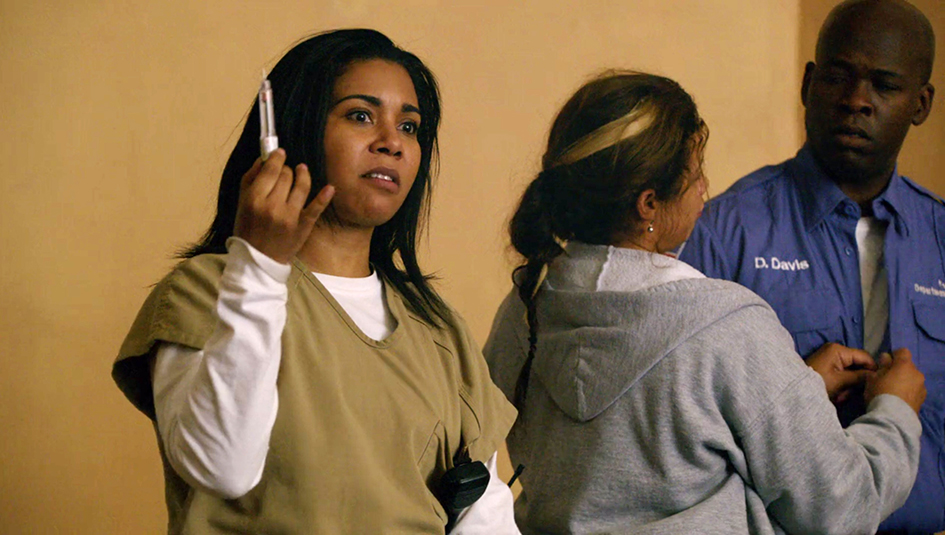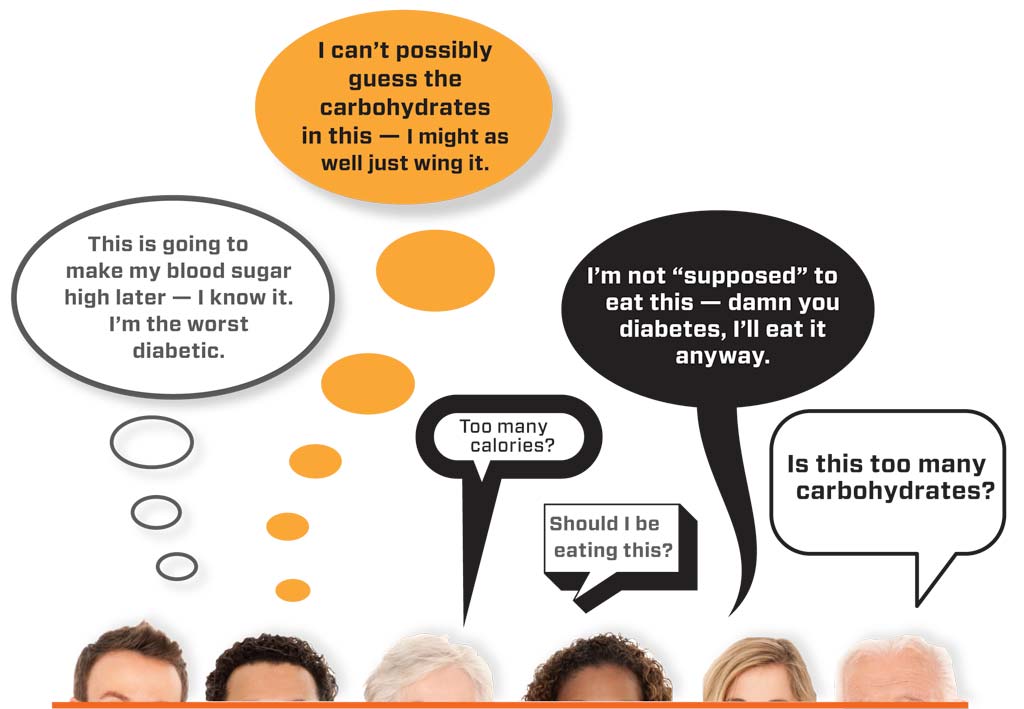Orange is the New Black’s Diabetes Portrayal is Almost Criminal

The playwright Anton Chekhov once gave this advice in storytelling: “One must never place a loaded rifle on the stage if it isn’t going to go off. It’s wrong to make promises you don’t mean to keep.” The writers of Orange is the New Black probably should have taken that to heart when they used an insulin pen as a prop early on in Season 5.
Spoilers ahead.
In the current season of the popular Netflix series, a riot breaks out at Litchfield Penitentiary. The inmates take control of the prison, and many of the guards become hostages. One of the guards is a character who is new to the show – he is listed on IMDB as CO Davis.
In the second episode of the show, a group of inmates perform a strip search of CO Davis in front of the entire population. During that strip search, the inmates discover Davis has an insulin pen in his pocket, which they then take away.
The guards are eventually stripped down to their underwear and locked into a cell block observation booth. While all of the guards there appear justifiably distressed, Davis complains that he needs to eat something or he’s going to go “into shock”. And in the next few scenes, he appears to have lower energy than the other guards.
Eventually, the guards are fed a dinner of leftover scraps from the cafeteria. While the pot of scraps is considered just barely edible, Davis digs into it with gusto.
And if the season ended there, the writers of Orange is the New Black could be given credit for providing one of the better portrayals of a character dealing with insulin-dependent diabetes. It’s not a slam-dunk, but the scenario could be considered basically correct.
Here’s the argument for why it would work: While we don’t have an exact timeline, it appears that the riot most likely breaks out sometime in the afternoon. That’s because in the last episode of Season 4, we see a character giving a press conference that a press relations officer says is designed to be aired as part of the evening news. We also see dinner being served during Episode 3 of Season 5; that provides the leftovers for the guards to eat.
We can give the writers the benefit of the doubt and conjecture that CO Davis, not expecting a riot, had bolused in preparation for lunch, or at least a late lunch. The “shock” Davis warns of could be hypoglycemia, and his groggy appearance would back that up. What he needed, then, was carbs to cover that bolus, and he perks up after eating.
Except….
Season 5 takes place over three days in total, and the insulin pen is never seen or mentioned again. Meanwhile, Davis seems to completely bounce back after eating, and he never seems to suffer from either hyperglycemia or hypoglycemia again. If the character has Type 1 diabetes, then he would have been in diabetic ketoacidosis from a lack of insulin by the end of the season. Even if he instead has Type 2 diabetes, we know that he still is at least partly dependent on insulin therapy, and therefore he should be worse for the wear without access to any medications by the end of the season.
Instead, CO Davis seems to be one of the most energetic of the hostages for the rest of the season. Eventually, he and most of the other guards escape. He is last seen eating potato chips after being rescued. Either that was ONE HELL OF A BOLUS he took off-screen, or we have to call bullshit on the portrayal.
Sadly, then, we must relegate CO Davis to the list of characters whose diabetes is used as a prop and then discarded. He wouldn’t be the first. In the show Shameless, for example, a central protagonist marries a man named Gus Pfender. Shortly after they marry, she sees Gus inject insulin for the first time. It is the only time in two seasons that Gus’s diabetes ever comes up.
At least CO Davis and Gus Pfender make it out of their appearances alive. In The Walking Dead, a character named Tina appears in one episode, and her only purpose seems to be that her friends need to find insulin for her. They do, but then she dies anyway when two glass-encrusted zombies come to life and eat her after she puts flowers near their head. (You had to be there for that sentence to make sense.) Also, some poor woman with Type 1 diabetes is given a terminal diagnosis in the time-traveling show, Outlander, but her tragic diagnosis proves to a nun that the main character, Claire, knows her medical stuff, so yay.
Read more: Diabetes makes a cameo in The Walking Dead.
As always, the most frustrating part of a fictional portrayal of diabetes falling short is that it represents a missed opportunity. Orange is the New Black has been applauded for addressing many little-discussed issues of incarceration, and the show has tackled the problem of inmates being unable to access needed medication. However, CO Davis’ short story arc appears to be the only time in which the show addresses diabetes in a remotely meaningful way.
The American Diabetes Association states that some 80,000 people with diabetes are housed in U.S. prisons or jails at any given time; they represent 4.8 percent of the total prison population. In recent years, there have been several high-profile cases of women with Type 1 diabetes being denied regular access to their insulin, so it’s certainly an issue that deserves addressing.
Read more: Morgan Angerbauer needlessly died of DKA in jail.
Perhaps the most maddening aspect of these kinds of mistakes is that they are so easily avoidable. One only need ask a person with diabetes whether such a portrayal makes sense, and those people aren’t hard to find.
In Orange is the New Black, the fictional character with diabetes even interacts with a character portrayed by an actor with diabetes. In 2015, actress Lea DeLaria revealed she had been diagnosed with Type 2 diabetes and is now on medications to control it, according to a report in People. DeLaria portrays the character of Big Boo, a fan favorite. A quick conversation could have cleared up at least some of these inaccuracies.
Maybe we’ll see CO Davis return in Season 6 of Orange is the New Black. Hopefully, he’ll have bolused again by then.
Thanks for reading this Insulin Nation article. Want more Type 1 news? Subscribe here.
Have Type 2 diabetes or know someone who does? Try Type 2 Nation, our sister publication.







